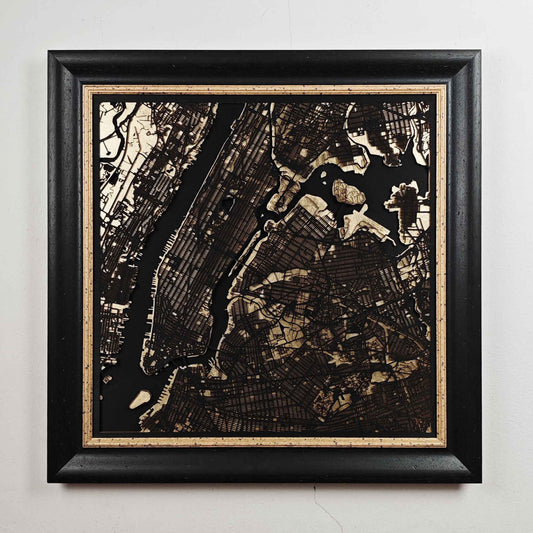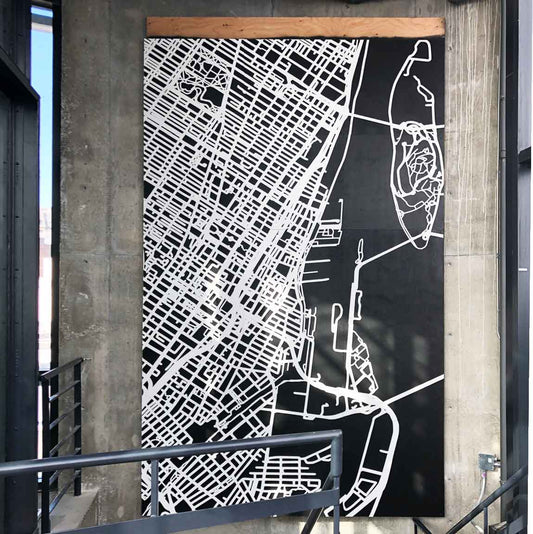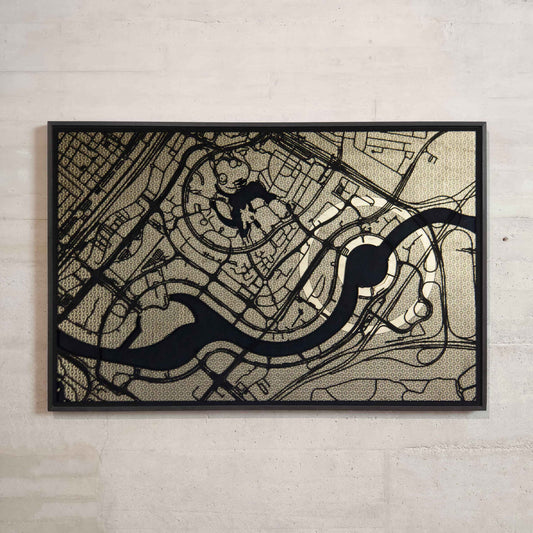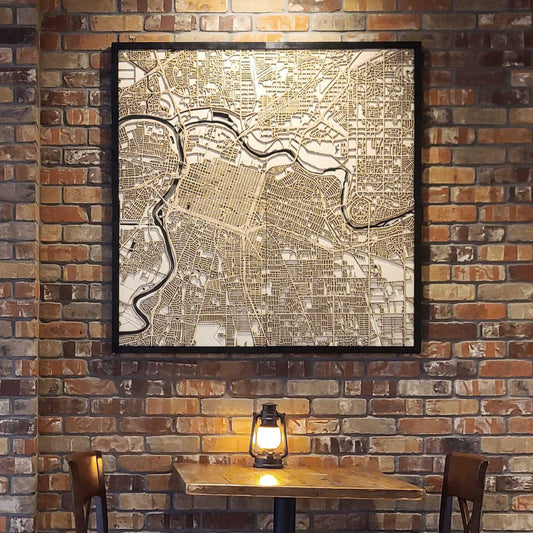Wall murals are like magic spells for your walls – they can stretch a tiny room into a grand hall, turn a dull corner into a tropical paradise, or even make your living room feel like the Louvre (minus the crowds). Whether you want to manipulate space, create a cozy ambiance, or just make your guests jealous, murals do the trick with style.
How to Manipulate Space in Art?
Ever noticed how some paintings feel like they’re pulling you in? That’s because artists use clever tricks to manipulate space! Lines that seem to vanish into the distance, overlapping shapes, and playing with colors and shadows all help create depth. A mural with a winding road or an open window can make a cramped room feel endless. Another great way to create depth is through layering – using different levels of texture or varying the intensity of details in different parts of the artwork. If you really want to go the extra mile, try a custom-made wooden map – the mix of texture and detail adds an extra dimension to the wall.
What is the 57 Rule in Hanging Art?
Now, let’s talk about hanging art – because, believe it or not, there's a science to it. The golden rule? Hang the center of your artwork 57 inches from the floor. That’s roughly eye level for most people (unless you’re a giraffe). This rule ensures a balanced, gallery-like look that allows the artwork to be appreciated at a natural height. Of course, if you’re placing the piece above furniture, you might need to adjust slightly – but more on that in a moment!
How Does Art Change a Space?
Art isn’t just for decoration – it changes the whole vibe of a room. Want energy? Go bold with bright colors and dynamic shapes. Prefer a zen sanctuary? Soft tones and minimalist designs are your best friends. Art acts as an emotional anchor in a space, setting the tone and ambiance. A large statement piece can turn an otherwise forgettable room into a show-stopping focal point. The right mural can make a space feel cozier, bigger, more luxurious, or even more adventurous. So, whether you’re into abstract explosions or serene landscapes, make sure your walls reflect your personality. And hey, if all else fails, just get a giant mural of a cat wearing sunglasses – it’s a guaranteed conversation starter.
What are the 7 Elements of Art?
Understanding the seven elements of art can help in selecting or designing the perfect mural. These elements include:
-
Line – Guides the eye and creates movement in a composition.
-
Shape – Defines objects and gives structure.
-
Color – Influences mood and ambiance.
-
Texture – Adds depth and tactile interest.
-
Value – Deals with lightness and darkness to create contrast and emphasis.
-
Space – Helps define dimensions and create depth.
-
Form – Adds a three-dimensional aspect to art.
When choosing or creating a mural, balancing these elements ensures a visually striking and cohesive design.
What is the 2/3 Rule for Hanging Pictures?
If you're hanging art above a couch or a bed, stick to the 2/3 rule – the piece should be about two-thirds the width of the furniture beneath it. This prevents your wall from looking like a lonely island in a sea of blank space. This rule helps create a sense of proportion and prevents the artwork from looking too small or overpowering the furniture. If you’re working with multiple pieces, consider a gallery wall with similar spacing principles in mind.
Should Art Be Hung at Eye Level?
The short answer? Yes. The long answer? It depends. The 57-inch rule is a great guideline for single-piece artwork, but the height may need to be adjusted depending on the room. In spaces where people are usually seated (like dining rooms or lounges), lowering the artwork slightly ensures better visibility. In contrast, for high-ceiling spaces or staircases, adjusting the height accordingly keeps everything in proportion. Ultimately, the best placement is one where the artwork feels naturally integrated into the space, neither too high nor too low.





